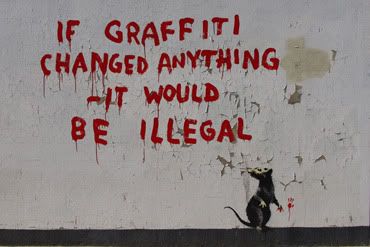Art and patronage has a complicated relationship. The reason is simple: Whoever pays for and facilitates the creation of art tends to influence the direction of art.
While this may be an ordinary thing in the art market, where artworks are freely hawked like any other commodity, it presents a problem for political art of the subversive kind. Art that receives state patronage is by definition art that is approved by the state; it therefore has limited subversive potential. Subversive art must hence be art that is not explicitly approved by the state; and an artistic object or act that is extra-legal is thus a good candidate for subversive art.
The arrest of the 'Sticker Lady' in Singapore and the subsequent online furore provides a good entry point for a discussion about the relationship between the state and subversive art.
From the point of view of the state, what she did was an act of vandalism or (if the distinction matters) at least that of the defacing of public property; to many, it was art. These are irreconcilable viewpoints not just because the state is not the best arbiter of what is and what is not art, which is a complex debate not suited to the dry legalist realm of discourse, but also because what she did is so compelling by virtue of the fact that it was an act of defiance of the law—in other words it spoke to its audience because it was subversive.
So, in that sense, demanding that the government recognise what she did as art and not a crime is quite beside the point. And, by extension, turning this into an issue of national policy on art and creativity is the wrong way to go about it; without a consensus that what she did was worthy of official recognition, the conversation would quickly reach a dead end. Instead, what we can do is to question the penalty against such acts and debate the implications of a harsh penalty on freedom of expression. Realistically speaking, what she did would always be legally deemed as a crime, but the enforcement of the relevant laws could certainly be toned down.
Why is a review the legal penalty for vandalism important? Firstly, a harsh penalty for vandalism is indicative of an authoritarian political culture that is not tolerant of dissenting voices, especially when this penalty is disproportionately heavy compared to penalties for other more severe crimes.
Secondly, if we want art of every kind to flourish, including subversive art, then it follows that we should try to reduce the heavy-handed prosecution of some kinds of art. Demanding that the authorities recognise subversive art is contradictory, but asking them to be less stern towards it is not.
Finally, this would also serve as a tangible and actionable goal that extends beyond this incident–a larger goal that could actually be reached without the debate being hopelessly mired in arguments about art and vandalism.
